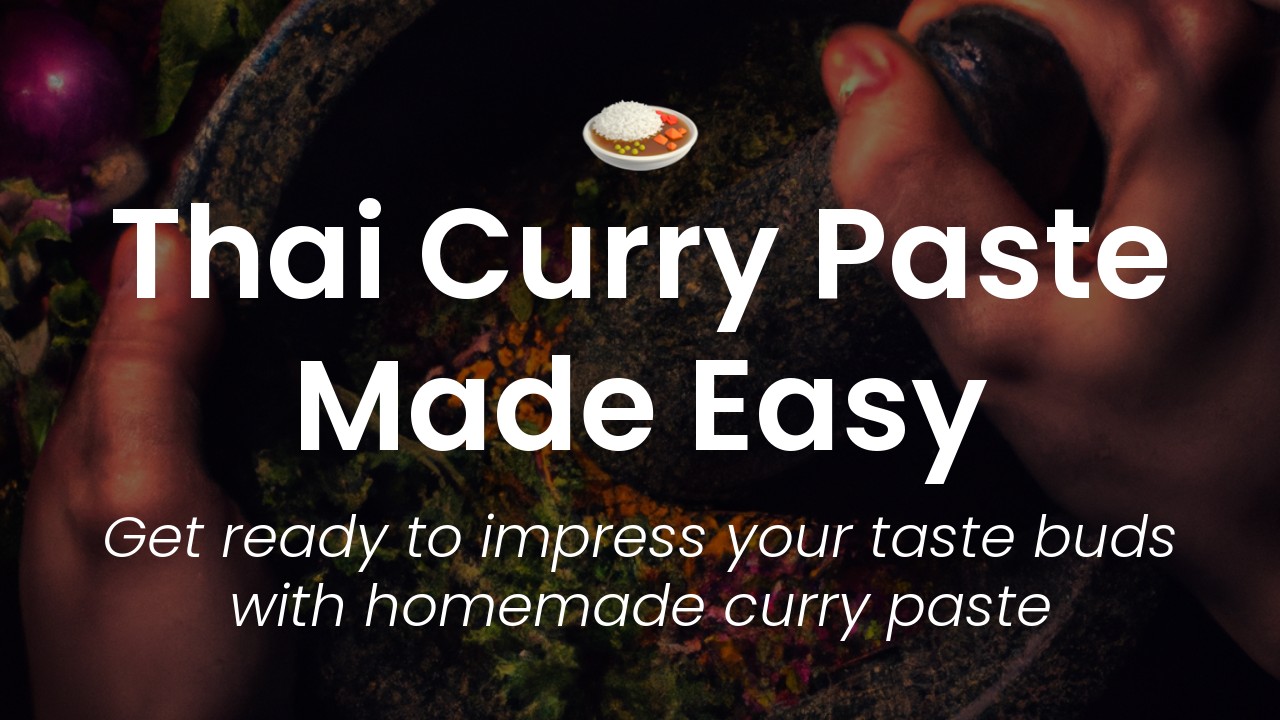Sawasdee ka! If you're a self-proclaimed foodie like me, then you know that Thai cuisine is one of the most popular and flavorful in the world. Thai curries are a quintessential part of the country's culinary heritage, and they come in a variety of colors, each with a unique blend of spices, herbs, and aromatics. From mouth-watering green curries to the fiery red ones, there's a whole world of flavors to explore.
But if you've ever tried to make a Thai curry at home, you know that getting the paste just right can be quite the challenge. Sure, store-bought pastes are available, but nothing beats the flavor and aroma of freshly prepared pastes. The good news is that with a bit of patience, practice, and some helpful tips, you too can master the art of Thai curry paste preparation.
In this article, we'll go through the basics of Thai curry paste preparation, including the ingredients, techniques, and tips to get the perfect paste every time. I'll also answer some common questions and debunk some myths along the way. So, grab your apron and let's get started!
Basic ingredients for Thai curry paste
Thai curries are well-known for their spicy and complex flavors that are brought to life with the use of curry paste. Making your own curry paste from scratch might seem intimidating, but it's actually quite simple with the right ingredients and techniques. Here are the basic ingredients you'll need for a delicious and authentic Thai curry paste:
- 10-15 dried red chili peppers
- 1 tablespoon coriander seeds
- 1 tablespoon cumin seeds
- 1 tablespoon black peppercorns
- 1 tablespoon shrimp paste
- 1 tablespoon chopped lemongrass
- 1 tablespoon chopped galangal
- 1 tablespoon chopped kaffir lime peel
- 1 tablespoon chopped garlic
- 1 tablespoon chopped shallots
Step-by-step guide to preparing curry paste
-
Soak the dried chili peppers in warm water for at least 30 minutes. Once they are soft, remove the stems and seeds and discard them.
-
Toast the coriander seeds, cumin seeds, and black peppercorns in a dry pan until fragrant. Let them cool for a few minutes before grinding them into a fine powder in a spice grinder or mortar and pestle.
-
In the same pan, toast the shrimp paste until it is fragrant and slightly browned.
-
Combine the ground spices with the shrimp paste and remaining ingredients in a food processor or blender.
-
Pulse the mixture until it forms a smooth paste. You may need to scrape down the sides of the blender or food processor a few times to ensure all the ingredients are incorporated.
Tips for the best results
-
Use high-quality, fresh ingredients for the best flavor.
-
Adjust the amount of chili peppers to suit your desired level of spiciness.
-
The shrimp paste can be substituted with fish sauce or soy sauce if you're vegetarian.
-
If you're using a mortar and pestle instead of a food processor or blender, you'll need to grind the ingredients for at least 15-20 minutes to achieve a smooth paste.
-
Store the curry paste in an airtight container in the refrigerator for up to 1 week or freeze it for up to 6 months.
Storage and shelf life
Curry paste can be stored in an airtight container in the refrigerator for up to 1 week, or it can be frozen for up to 6 months. If you're freezing the curry paste, it's best to store it in small portions so you can thaw only what you need for each use.
Delicious variations to try
Once you've mastered the basic Thai curry paste recipe, you can experiment with a variety of delicious variations. Here are a few ideas to get you started:
-
Yellow curry paste: Use turmeric in place of the red chili peppers for a milder, brighter yellow curry paste.
-
Massaman curry paste: Add cinnamon, cardamom, and nutmeg for a rich, flavorful Massaman curry paste.
-
Green curry paste: Use green chili peppers instead of red chili peppers for a spicier, vibrant green curry paste.
Recipes to use your curry paste with
Now that you have your homemade curry paste, it's time to put it to use! Here are a few Thai curry recipes to try:
-
Red curry chicken: Combine your curry paste with coconut milk, chicken, and vegetables for a flavorful and satisfying dinner.
-
Green curry shrimp: Stir-fry shrimp, vegetables, and your green curry paste for a quick and easy meal.
-
Massaman beef curry: Slow-cook beef, potatoes, and carrots in your Massaman curry paste for a rich and comforting meal.
In conclusion, making your own Thai curry paste doesn't have to be difficult or intimidating. With a few simple ingredients and techniques, you can create a delicious and authentic curry paste that will elevate your meals to new heights. So roll up your sleeves, put on some Thai music, and start cooking!







